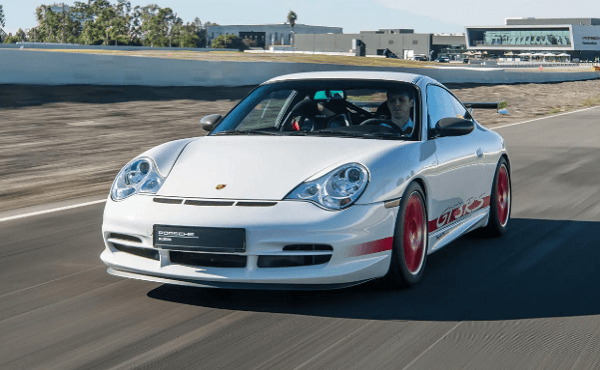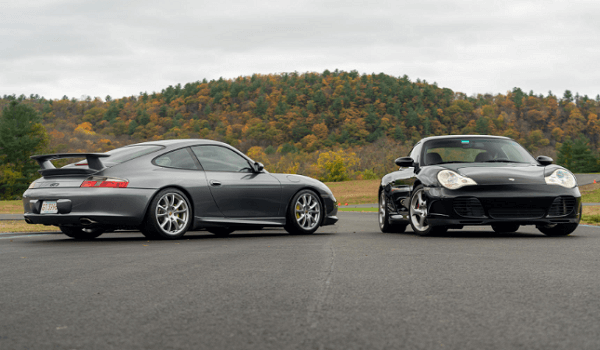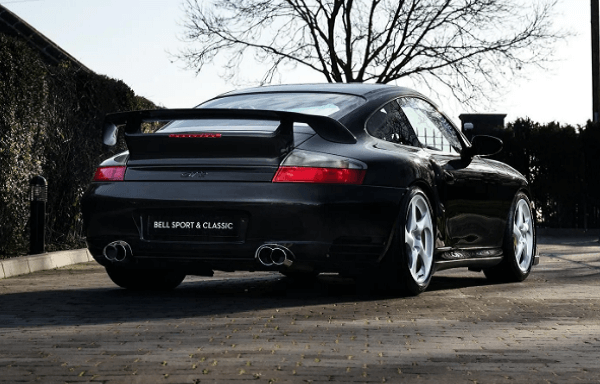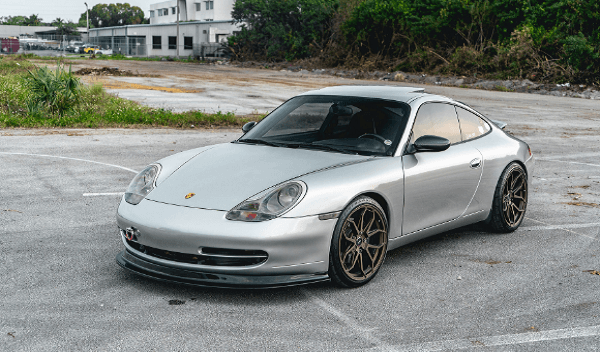Porsche 996 Years to Avoid – Porsche is a brand that has been known for its luxury and performance for decades. The Porsche 996 was a sports car that was introduced in 1997 as a successor to the Porsche 993.
The 996 was a significant departure from the previous generation of Porsche 911s, as it was the first to feature a water-cooled engine instead of the air-cooled engine that was used in previous generations.
While the Porsche 996 was initially criticized for its radical design and water-cooled engine, it has since become a beloved classic among Porsche enthusiasts.
One of the most important things to consider when buying a Porsche 996 is the model year. While the 996 is generally considered to be a reliable sports car, there were some model years that experienced significant issues.
In this article, we will discuss the Porsche 996 years to avoid and the best years to buy. We will also provide tips for buying a used Porsche 996 that is both reliable and enjoyable to own.
The Porsche 996 Years to Avoid

Not all model years of the Porsche 996 are created equal. There were some years that experienced significant issues, which makes them less desirable to own.
Here are the Porsche 996 years to avoid:
1999-2001 Porsche 996
The first three model years of the Porsche 996 (1999-2001) are the ones to avoid due to a significant issue with the intermediate shaft (IMS) bearing. The IMS bearing is a small bearing that supports the intermediate shaft in the engine.
The problem with the IMS bearing is that it can fail, which can lead to catastrophic engine failure. This issue affects both the 3.4L and 3.6L engines found in the Porsche 996.
The IMS bearing failure is caused by a design flaw in the bearing itself. The bearing is sealed and lubricated with engine oil, but the seal can fail, allowing engine oil to leak out.
This lack of lubrication can cause the bearing to fail, which can lead to metal shavings being circulated through the engine, causing significant damage.
If you’re considering buying a 1999-2001 Porsche 996, it’s essential to have the IMS bearing checked or replaced.
It’s also a good idea to have the car inspected by a qualified Porsche mechanic to ensure that there are no other issues.
2002-2004 Porsche 996
The 2002-2004 Porsche 996 is another model year to avoid due to the IMS bearing issue. While the IMS bearing issue was not as prevalent in these model years, it’s still a potential problem that should be addressed before purchasing a used 996.
In addition to the IMS bearing issue, the 2002-2004 Porsche 996 also had issues with the rear main seal, which can cause oil leaks.
Other common problems with these model years include coolant leaks, transmission problems, and electrical issues.
2005-2006 Porsche 996
The 2005-2006 Porsche 996 is another model year to avoid. While the IMS bearing issue was largely resolved in these model years, they experienced a different issue with the engines.
The engines in these model years were prone to scoring on the cylinder walls, which can lead to oil consumption and engine damage.
In addition to the engine issue, the 2005-2006 Porsche 996 also had issues with the air conditioning system and the interior electronics. These issues can be costly to repair, which makes these models years less desirable to own.
The Best Years of the Porsche 996

While there were some model years of the Porsche 996 to avoid, there were also some years that are considered to be the best.
Here are the best years of the Porsche 996:
2002-2004 Porsche 996 (Turbo and GT3 Models)
While the 2002-2004 Porsche 996 is generally not recommended, there are two exceptions: the Turbo and GT3 models.
The Turbo and GT3 models of the 996 were not affected by the IMS bearing issue and are generally considered to be reliable sports cars.
The 2002-2004 Porsche 996 Turbo features a twin-turbocharged 3.6L flat-six engine that produces 415 horsepower and 415 lb-ft of torque.
The Turbo model also features all-wheel drive, which provides excellent traction in all weather conditions. The GT3 model, on the other hand, features a naturally aspirated 3.6L flat-six engine that produces 380 horsepower and 284 lb-ft of torque.
The GT3 model is a track-focused sports car that features a six-speed manual transmission, rear-wheel drive, and a stiffer suspension.
2003-2005 Porsche 996 (Carrera 4S and Turbo S Models)
The 2003-2005 Porsche 996 is another model year to consider. The Carrera 4S and Turbo S models of the 996 were introduced in 2003 and are considered to be the best versions of the 996.
The Carrera 4S features a 3.6L flat-six engine that produces 320 horsepower and 273 lb-ft of torque. The Carrera 4S also features all-wheel drive, which provides excellent traction in all weather conditions.
The Turbo S model, on the other hand, features a twin-turbocharged 3.6L flat-six engine that produces 444 horsepower and 457 lb-ft of torque.
The Turbo S model also features all-wheel drive, which provides excellent traction in all weather conditions.
2006 Porsche 996 (Carrera 4S and Turbo S Models)
The 2006 Porsche 996 is the last model year of the 996 and is also considered to be a good year to buy. The 2006 Porsche 996 features a revised engine that addresses the scoring issue found in the 2005 model year.
The 2006 Porsche 996 also features a revised suspension, which provides better handling and a more comfortable ride.
The Carrera 4S and Turbo S models of the 2006 Porsche 996 are the most desirable. The Carrera 4S features a 3.8L flat-six engine that produces 355 horsepower and 295 lb-ft of torque.
The Turbo S model, on the other hand, features a twin-turbocharged 3.6L flat-six engine that produces 444 horsepower and 457 lb-ft of torque.
Most Common Porsche 996 Problems

The Porsche 996 is a beloved sports car known for its performance, handling, and sleek design. However, like any other car, the Porsche 996 is not immune to problems.
1. Intermediate Shaft Bearing Problem
The intermediate shaft (IMS) bearing is a well-known issue among Porsche 996 owners. The IMS bearing is responsible for supporting the intermediate shaft that drives the camshafts, and if it fails, it can cause catastrophic engine failure.
Symptoms of a failing IMS bearing include strange noises coming from the engine, rough idle, and loss of power.
It’s recommended to have the IMS bearing inspected and, if necessary, replaced with an upgraded bearing or a different solution like a direct oil feed to the IMS.
2. Oil Leaks
Oil leaks are another common problem with the Porsche 996. These leaks can come from a variety of places, including the rear main seal, valve cover gaskets, and oil cooler lines.
Oil leaks can be annoying and messy, but if left unaddressed, they can also cause more significant problems. Regular oil leak inspections and repairs are essential to keep your Porsche 996 running smoothly.
3. Troubles With the Exhaust
The Porsche 996 has a complex exhaust system, and problems with this system are not uncommon. Some of the most common issues with the exhaust include broken or cracked exhaust manifolds, broken catalytic converters, and failed oxygen sensors.
These issues can cause poor performance, strange noises, and even check engine lights. Regular inspections and maintenance of the exhaust system can help prevent these problems from occurring.
4. Suspension Problems
The suspension system of the Porsche 996 is crucial for its handling and performance, but it can also be a source of problems.
Some of the most common issues with the suspension include worn-out bushings, failing shock absorbers, and broken control arms.
These problems can cause a variety of issues, including poor handling, vibration, and noise. Regular inspections and maintenance of the suspension system can help keep your Porsche 996 handling like new.
Factors to Consider When Buying A Porsche 996

When buying a Porsche 996, there are several factors to consider, including:
1. Price Range
The price of a Porsche 996 can vary significantly depending on the model year and trim level. It’s important to have a budget in mind when shopping for a Porsche 996 and to be aware of the market prices for different model years and trim levels.
2. Trim Levels
The Porsche 996 is available in several different trim levels, including the Carrera, Carrera 4, Turbo, and GT3. Each trim level offers different performance and features, so it’s important to research each one to find the one that best fits your needs and budget.
3. Condition of the Car
When buying a used Porsche 996, it’s important to inspect the car carefully to ensure that it’s in good condition.
A pre-purchase inspection by a qualified Porsche mechanic is recommended to identify any potential issues with the car.
4. Maintenance and Service History
The maintenance and service history of the car is also an important factor to consider when buying a Porsche 996.
It’s important to obtain the car’s service records and check if it has been regularly maintained and serviced. A well-maintained Porsche 996 is more likely to be reliable and have a longer lifespan.
5. IMS Bearing Replacement
As mentioned earlier, the IMS bearing issue is a known problem with the Porsche 996. If you’re considering buying a Porsche 996, it’s important to check if the IMS bearing has been replaced or upgraded.
If it hasn’t, it’s recommended to have it replaced as a preventative measure.
6. Transmission Type
The Porsche 996 is available with both manual and automatic transmissions. It’s important to choose the transmission type that best fits your driving style and preferences.
Manual transmissions provide a more engaging driving experience, while automatic transmissions provide convenience and ease of use.
Is 996 better than 993?
This is subjective and depends on personal preferences. The Porsche 993 is considered by many to be the last of the air-cooled 911s and is highly desirable among collectors. The Porsche 996, on the other hand, is a more modern and technologically advanced car with improved performance and features.
Whether the 996 is better than the 993 depends on what you’re looking for in a sports car.
Is a Porsche 996 fast?
Yes, the Porsche 996 is a fast sports car that can accelerate from 0-60 mph in as little as 4.2 seconds, depending on the model and engine configuration.
Can you drive a Porsche every day?
Yes, you can drive a Porsche every day. It’s important to note that Porsches are high-performance sports cars and may not be as practical or comfortable for daily driving as other cars.
Maintenance and repair costs may be higher for a Porsche than for a typical commuter car.
Is Porsche 911 comfortable for long trips?
The Porsche 911 can be comfortable for long trips, but it depends on the model and individual preferences. Some 911 models are more focused on performance and may have stiffer suspension and less comfortable seats, while others may be more luxurious and comfortable for long-distance driving.
The 911’s rear-engine design can affect the car’s handling and stability at high speeds, which may not be comfortable for some drivers.
Why is a Porsche 911 oil change so expensive?
Porsche 911s require specialized synthetic oil and filters that can be more expensive than conventional oil and filters used in typical cars. Porsche dealerships and independent mechanics that specialize in Porsches may charge higher labor rates due to the car’s complex engineering and specialized knowledge required for servicing and maintenance.
Finally, some 911 models may have engines that require more frequent oil changes, which can increase the cost over time.
Conclusion
The Porsche 996 is a popular sports car that offers excellent performance and handling. While the 996 has a few known issues, it’s still a great car to buy if you know what to look for.
When buying a Porsche 996, it’s important to consider the model year, trim level, condition of the car, maintenance, and service history, IMS bearing replacement, and transmission type.
If you’re looking for the best years to buy, the 1999-2001 Porsche 996 and the Turbo and GT3 models of the 2002-2004 Porsche 996 are generally considered to be the most reliable and desirable.
The 2003-2005 Porsche 996 Carrera 4S and Turbo S models are also good options, while the 2006 Porsche 996 is the last model year and features several improvements over previous years.
The best Porsche 996 to buy is the one that fits your needs and budget. With proper research and inspection, you can find a reliable and enjoyable Porsche 996 that you’ll love to drive for years to come.